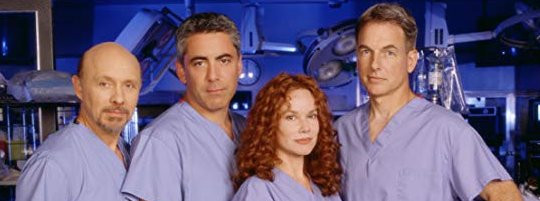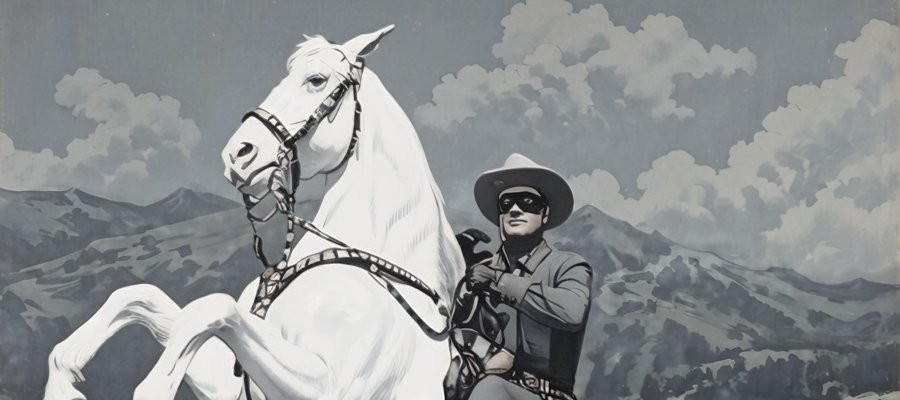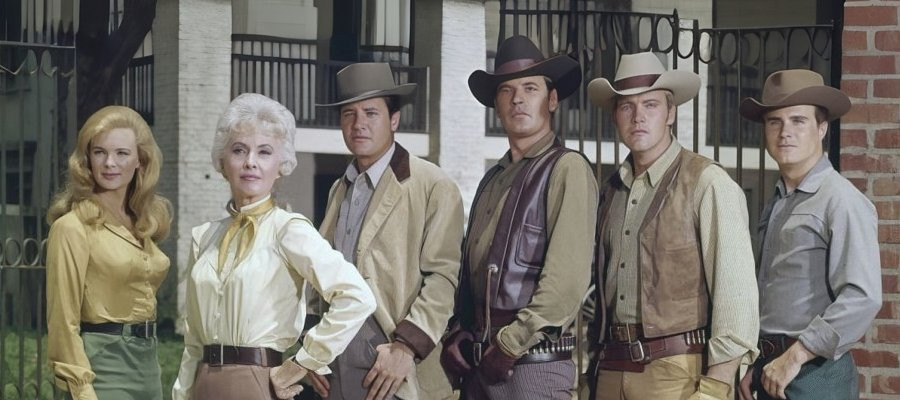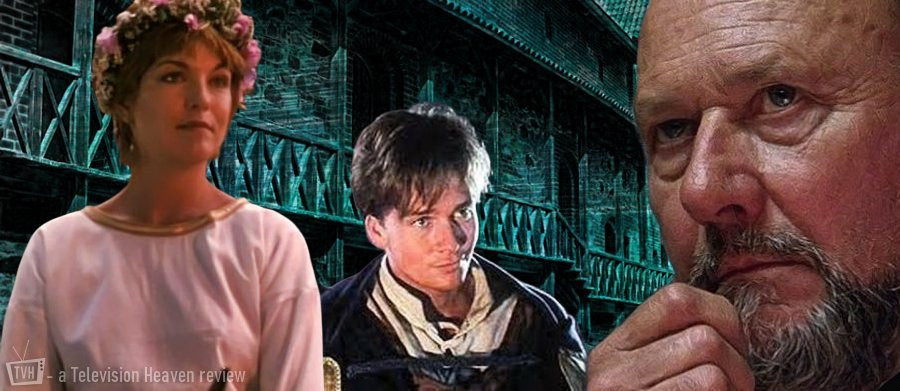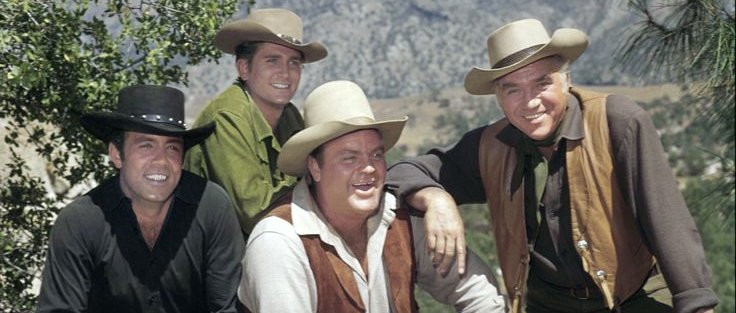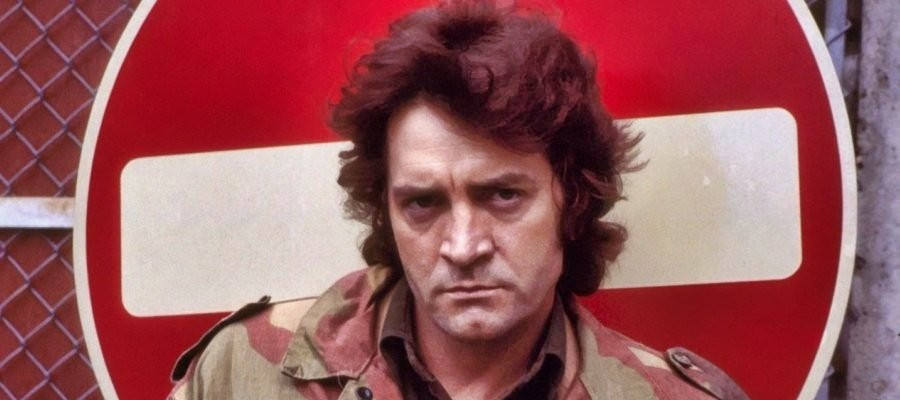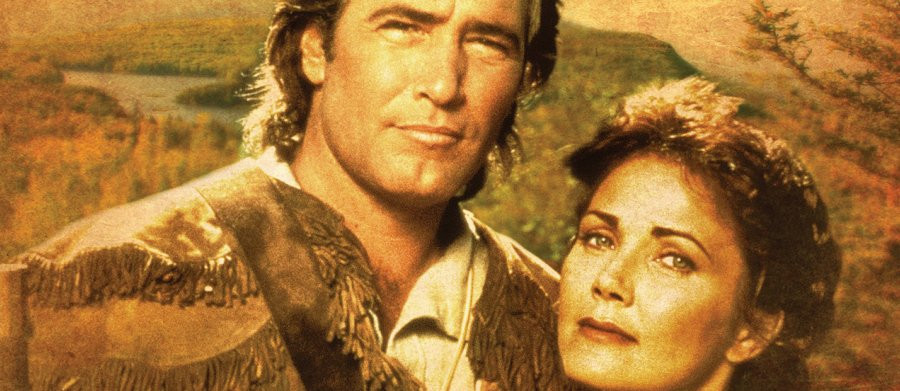
Hawkeye
1994 - United StatesReview: John Winterson Richards
It has been said of the novelist James Fenimore Cooper that he told great stories badly. That may be a bit harsh but it is not entirely unfair.
Take his most famous book, 'The Last of the Mohicans.' It is unquestionably a great story. Even Tolstoy was a fan. Its greatness is confirmed by the way it has been adapted many times for film and television, usually with very little change in the basic plot, which is rare in adaptation. Some of these modern versions have been very successful, including Michael Mann's 1992 feature film, and a memorable BBC series in the 1970s with the Welshman Philip Madoc oddly convincing as the Indian War Chief Magua (there are in fact legends, sadly unsubstantiated, of a Welsh speaking tribe of Indians descended from an explorer Prince named Madoc).
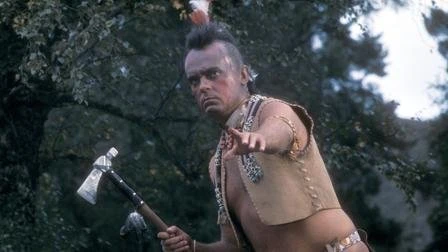
It is arguably because those adaptations were so exciting that many who subsequently read the book were a little disappointed. Let us just say that its early 19th Century prose and dialogue style has not aged well.
The BBC version was sufficiently popular for them to follow up with a fairly close adaptation of Cooper's own sequel novel, 'The Pathfinder,' which may in fact have been what we would call today a "prequel" because the text is ambiguous about dates and makes little or no direct reference to the events in 'The Last of the Mohicans.' In many ways, 'The Pathfinder' is a better novel, but it presents a dramatic problem for any adaptor: Cooper's great hero, "Hawkeye" - officially Nathaniel Bumppo, so one can understand why he prefers to be known by his cool nickname - is reduced to a rather undignified supporting role.

This was commercially unacceptable to the legendary television producer Stephen J Cannell when he sought to cash in on the success of the Michael Mann film by following it up with a "spin off" series - which includes shots from the film in its opening sequence and at other points. Much of the financial success of the film was due to its popularity with women, who liked the love story that is not in the novel. So Hawkeye had to be the romantic hero again.
The whole plot of 'The Pathfinder' was therefore junked and a new "prequel" storyline took its place. Since Hawkeye only meets Cora in the course of 'The Last of the Mohicans,' a new love interest had to be introduced, but since film fans - who outnumber book readers - assume he went off to live happily ever after with Cora, the new love interest could not be permanent.
Cannell and his writers solved this problem by making the new character a married woman, but with a husband conveniently missing, presumed dead. This allowed an unconsummated sexual attraction between two people who were not destined for each other without them looking either flighty or dishonourable. A respect for the morality of the period made this very effective.
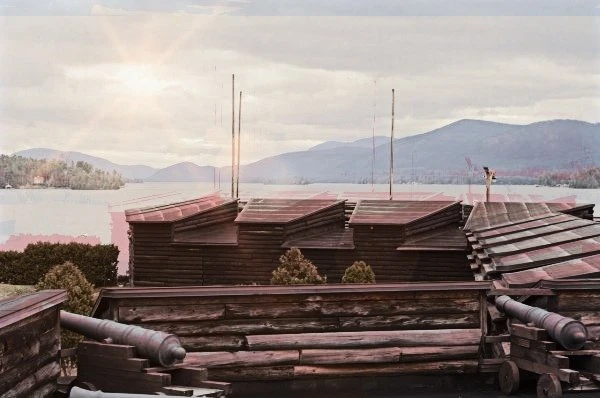
The story begins in 1755, two years before the Siege of Fort William Henry depicted in "The Last of the Mohicans.' At that point there was still a sort of "cold war" between British and French outposts for control of the strategically important river valleys to the West of Britain's North American Colonies. That had recently intensified as the result of a patrol action far the South of the events in Hawkeye, and not mentioned in the show, involving a Lieutenant Colonel George Washington. There are no "Man of Destiny" distant trumpets at the sound of his name because he was then only a young Militia officer whose inexperience led to an incident that was destined to turn this local "French and Indian War" into a full blown global conflict, the Seven Years War. It is worth noting that, far from wanting to remain neutral in a War between the British and the French, as the show implies, the British North American Colonists, not least Washington, and Indian allies of the British started it, joined in with vigour, and benefited most from it.
When the show starts, the French are no more than a menacing presence, and both sides become more active as it goes on. Although it lasted only one season, it was a full season, which in those days meant 22 episodes, and it became quite epic in places, at least by television standards, with clever use made of film clips, period props and uniforms, and reenactors.
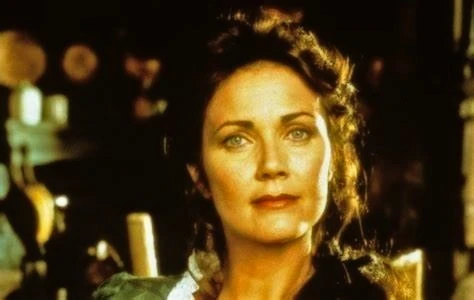
It is set in the fictional Fort Bennington in the Upper Hudson Valley, New York State, where there is indeed a town of that name but no fort. The fort in 'Hawkeye' looks remarkably comfortable and well developed for a frontier outpost for that time and place, and it is shown, slightly anachronistically, as attracting serious entrepreneurs and speculators seeking their fortune in unclaimed lands. These include Mrs Elizabeth Shields, played by Lynda Carter.
Some people have said unkind things about Carter's acting abilities based on 'Wonder Woman.' In her defence, the 1970s notion of a woman action hero hardly gave her much scope to excel. Either way, there is no doubt that 'Hawkeye' demonstrated that she had improved with experience. She gives an assured, often likeable performance as a very strong female character.
Elizabeth Shields is certainly no fool, but her previous life has not prepared her for the brutality of frontier existence. Happily, she soon attracts the good offices of the eponymous Hawkeye, a tough but kindly trapper living with Indians and perfectly at home in the Wilderness.

He is played here by Lee Horsley, previously best known for the short lived but well regarded 'Nero Wolfe' with William Conrad, and the film "The Sword and the Sorcerer" (sic), which was, as its name suggests, a fairly unimaginative entry in the "sword and sorcery" boom of the early 1980s. If not the most versatile or sophisticated of actors, Horsley has the air of an authentic outdoorsman, and a brisk masculine charm that made him well cast as Hawkeye.
Together Carter and Horsley made a credible and attractive couple, all the more so for being slightly older than the juvenile leads which are usually the focus of such projects. It is pleasant to have a proper grown up romance for a change.
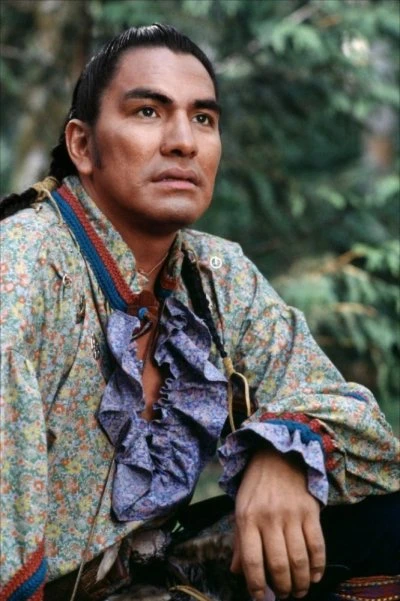
The most substantial actor in the cast is Rodney A Grant as Chingachgook, whose friendship with Hawkeye is fraternal, as in the novels, not the adoptive father-son relationship of the Michael Mann film. He has a good dynamic with Horsley, especially when his character is allowed a little dry humour. It is a shame that the scriptwriters did not give him more to do. Instead he is confined to the standard "noble Indian" role, helping out the white characters from time to time. Incidentally, the use of the word Indian is deliberate. The last time anyone bothered to ask the actual Indians, they preferred it to the bureaucratic "Native American" (what they prefer even more is if you take the time to ask about their tribal name and use that). Not only has the White Man stolen the Indians' land, he even tells them what they should call themselves.
Most of the rest of the cast are typically competent Canadians. They include Lochlyn Munro and Jed Rees as a pair of comedy relief young chancers, and Garwin Sanford, bringing some nuance and depth to the obligatory villainous British officer - this being an American show, a fact frequently reflected in its anachronistic politics.
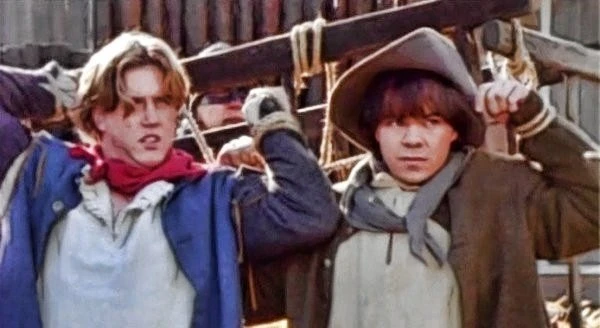
The production was one of the first of many American projects based in Canada, and it was certainly a good showcase for what Canada could offer, in terms of location, and talent before and behind the camera. British Columbia stands in very convincingly as Upper New York State, despite some geographical differences. The photography is often stunning.
Indeed, the look of the whole thing is the best reason to watch it. The 1990s were in general an optimistic time for most people. This is reflected in the positive, cheery tone of many of the adventure shows: there are obvious parallels between the style of 'Hawkeye' and that of 'Hercules the Legendary Journeys' which was being filmed in equally beautiful New Zealand around the same time; and it is interesting to compare the energetic titles sequence of 'Hawkeye' with that of the slightly later 'Xena Warrior Princess.' Much of the visual style we associate with a certain type of Nineties show can be traced back to 'Hawkeye.'
In particular, there was a revival - sadly all too brief - of bright colours. The wonderful Canadian landscapes offered a full spectrum, which was accepted, and exploited, with gratitude, but the art, costumes, and props departments also seem to have made the deliberate decision to ditch strict period authenticity, which would have been fairly downbeat on the frontier, in favour of a more romantic interpretation of the 18th Century.
Carter's wardrobe is a special delight, even if one wonders how an aspirational merchant's wife could have afforded all those fashionable but impractical clothes, and then transported them to the middle of nowhere. Who cares? The whole thing is a treat for the eyes, as is Carter herself it must be said.
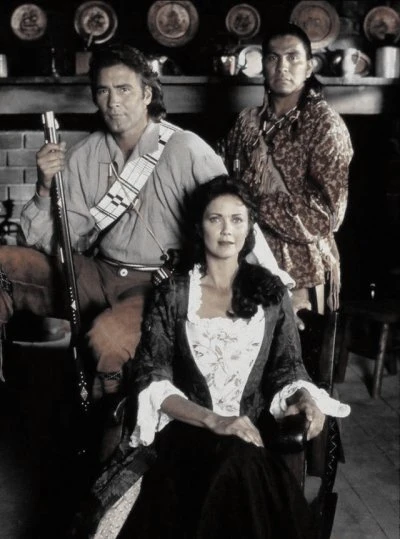
Fort Bennington also appears to have been one of the very few frontier outposts with a Garrison Hairstylist. Again, who cares? There is always a certain suspension of disbelief in these sort of shows, and 'Hawkeye' actually commits less crimes against historical narrative than most.
It is a pity that it never really found its audience. Perhaps it was too grown up for youngsters and too superficial for adults. Whatever else, it was bright, colourful fun with decent values, a valiant attempt to revive what used to be called good old fashioned family entertainment.
Seen this show? How do you rate it?
Seen this show? How do you rate it?
Published on September 23rd, 2020. Written by John Winterson Richards for Television Heaven.



